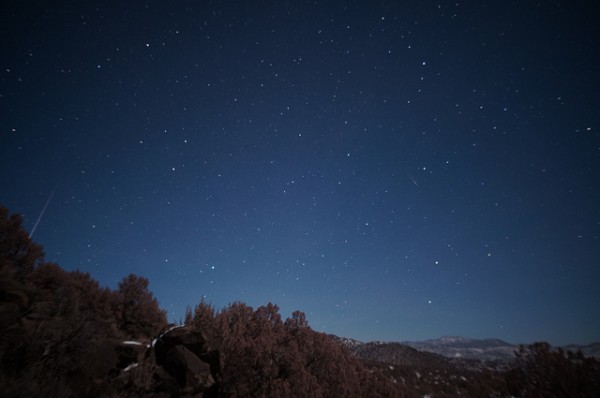By Ana Verayo, | January 03, 2017

The yearly Quadrantid meteor shower is usually brief and occurs in early January. (Mike Lewinski/CC BY 2.0)
As we enter the New Year, the most intense meteor showers, which are known as the Quadrantids, would usher us into2017. This month, this annual meteor shower will cause a deluge of shooting stars at 100 meteors per hour during peak activity.
Like Us on Facebook
On the night of January 3, Tuesday, the Quadrantids will be at its peak activity at around 9 a.m. EST. They will be only visible to the West Coast, Alaska, and Hawaii when it is still dark outside.
The peak Quadrantids activity sometimes does not coincide with forecasts and can persist for about an hour or more. Other meteor showers' peak activities can last for days while the elusive Quadrantids lasts for a few hours at best.
This mysterious meteor shower apparently originates from 2003 EH1 which is a space rock that may have been broken off from its parent comet around 500 years ago. Due to the perpendicular orbits of Earth and this comet, our planet is sprayed with debris from 2003 EH1 resulting in a short spanned meteor shower.
When viewed from the night skies, the Quadrantid meteor shower can be seen in the Boötes constellation or "The Herdsman" in the northeastern region of the sky. Meteor showers are usually named after their constellation, which suggests the name "Bootids" for the Quadrantids.
The Quadrantids were first observed and recorded in the 1830s and was spotted in the constellation Quadrans Muralis by Belgian astronomer Adolphe Quetelet. Since then, many astronomers and scientists in Europe and America have been observing this meteor shower. However, that particular constellation is now non-existent.
During a typical Quadrantid shower, some 60 to 120 meteors are seen zipping past the skies appearing bluish due to the magnesium content of the meteors as they burn upon entry into Earth's atmosphere.
-
Use of Coronavirus Pandemic Drones Raises Privacy Concerns: Drones Spread Fear, Local Officials Say

-
Coronavirus Hampers The Delivery Of Lockheed Martin F-35 Stealth Fighters For 2020

-
Instagram Speeds Up Plans to Add Account Memorialization Feature Due to COVID-19 Deaths

-
NASA: Perseverance Plans to Bring 'Mars Rock' to Earth in 2031

-
600 Dead And 3,000 In The Hospital as Iranians Believed Drinking High-Concentrations of Alcohol Can Cure The Coronavirus

-
600 Dead And 3,000 In The Hospital as Iranians Believed Drinking High-Concentrations of Alcohol Can Cure The Coronavirus

-
COVID-19: Doctors, Nurses Use Virtual Reality to Learn New Skills in Treating Coronavirus Patients







